Summer is underway with tasty beetroot, broad beans, new cabbage and broccoli, carrots and more. It’s a top time for making a lot of compost too.
Below I show the rewards of seed saving. and the beauty of a no dig vegetable garden, with its flowers! And there is a look at my new book.
For an update via my newsletter, you can use this link to Mailchimp.
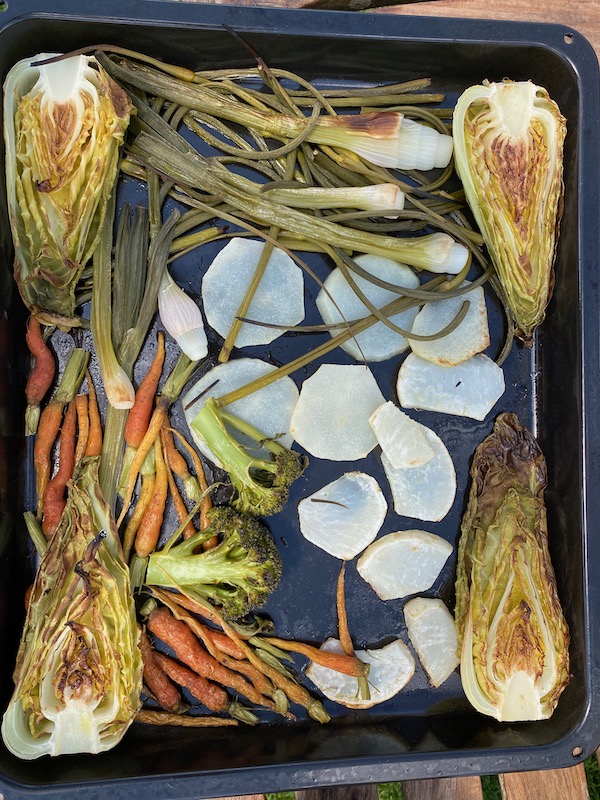
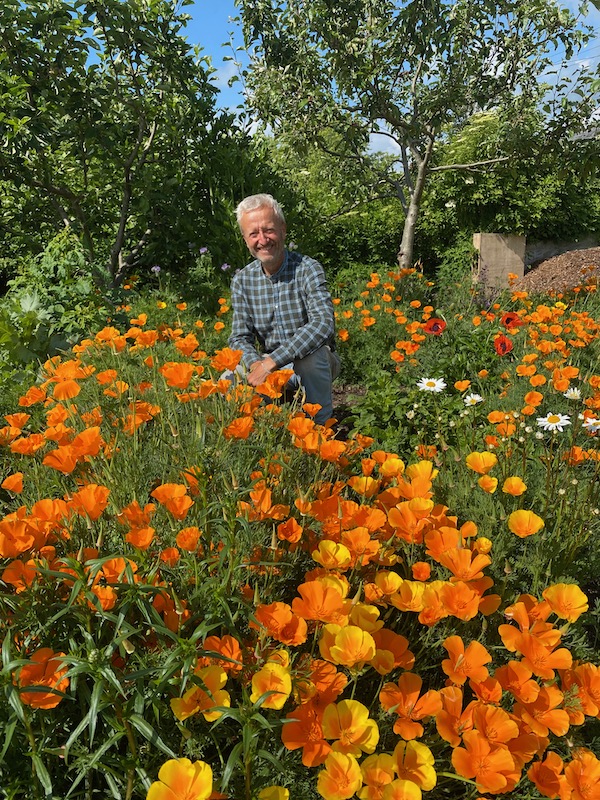
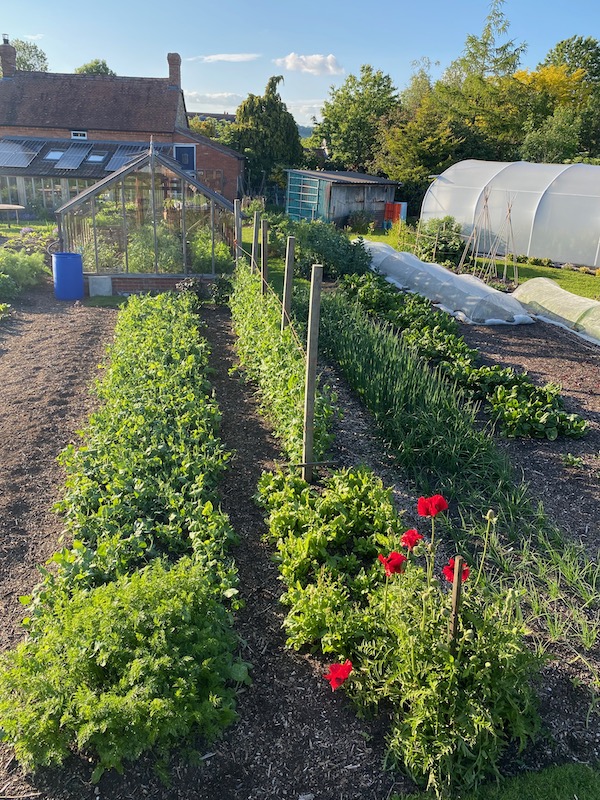
Homesaved Boltardy seed
I am delighted with the result of my first attempt at saving seed of beetroot. I’ve become so disillusioned with the declining quality of commercial Boltardy seed. I know the variety well having grown it since 1983, when it was way better!
The photos speak for themselves, and I’m also delighted by the vigour of the plants.
In the last photo you can see the moon rings! Every new and full moon creates a ring.
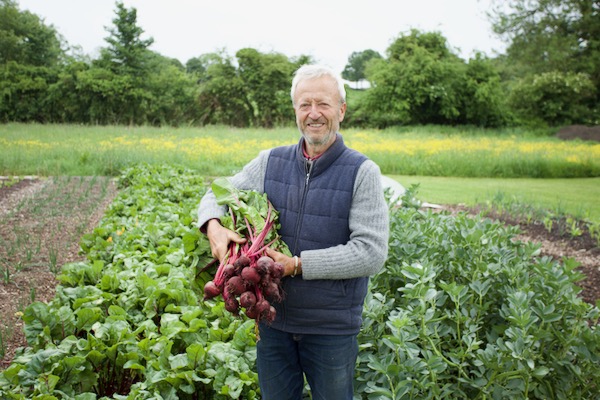
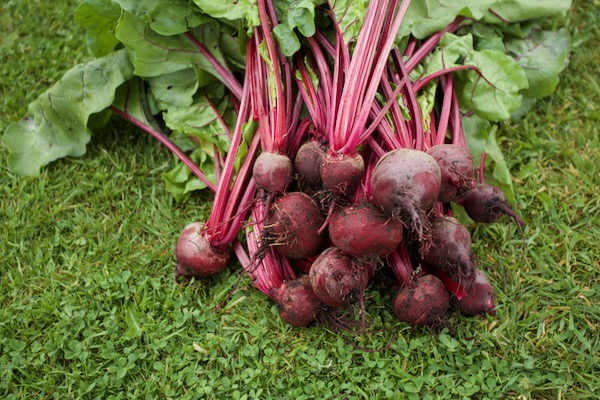
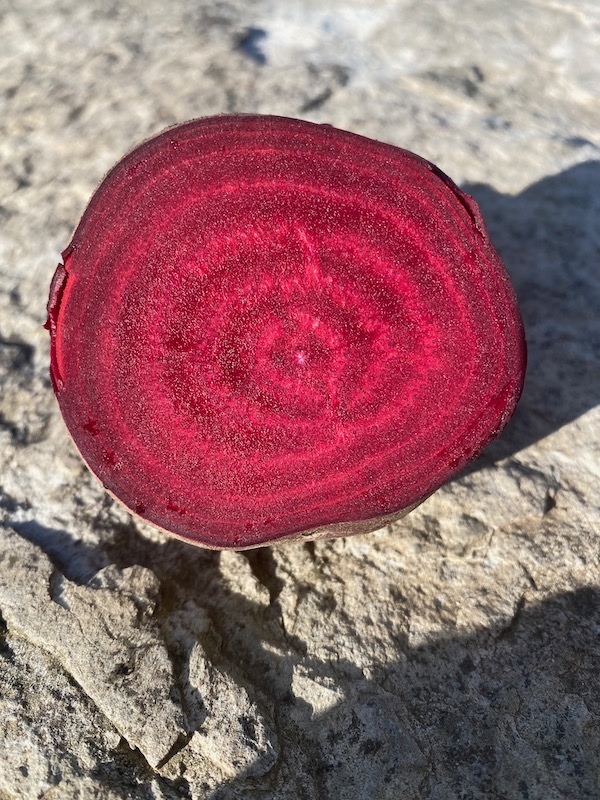
Making compost
In the northern hemisphere it’s close to maximum possibility for making lots of compost. There is so much new growth and I urge you to scrounge as much as you can from other places, as well as your garden. Last week I scythed the roadside verge around Homeacres, and just before the flowers turn to seeds.
I also cleared a lot of forget-me-nots from the front garden and they are seeding, so I was careful to put them closer to the centre of my main heap, 1.5 by 1.8 m / 5x6ft, whose size means more heat.
My pallet heaps get warm but with not so high temperatures as the larger bays, and for less time. If anything they make nicer compost and demonstrate how heat is not vital for a decent result. Just have a go if you’re not sure, and learn as you go. Check out my videos, there is a playlist of videos about making compost on my YouTube channel.
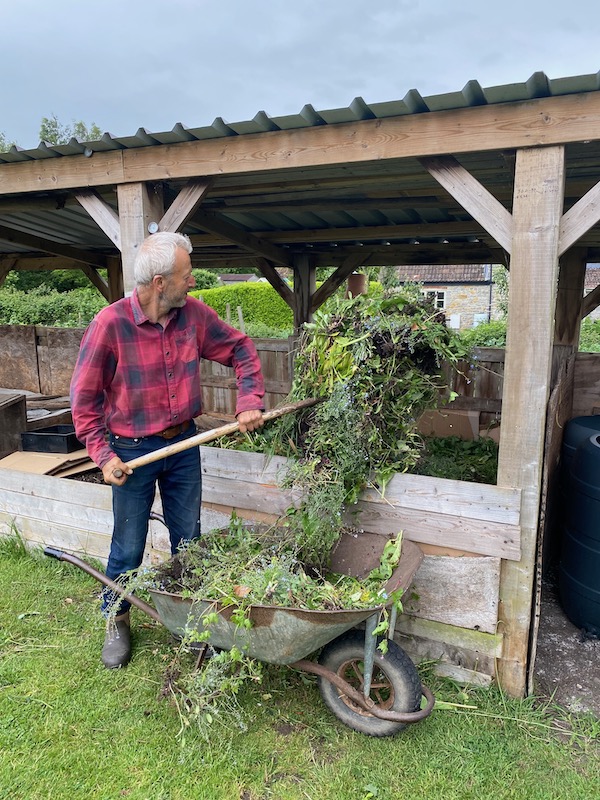
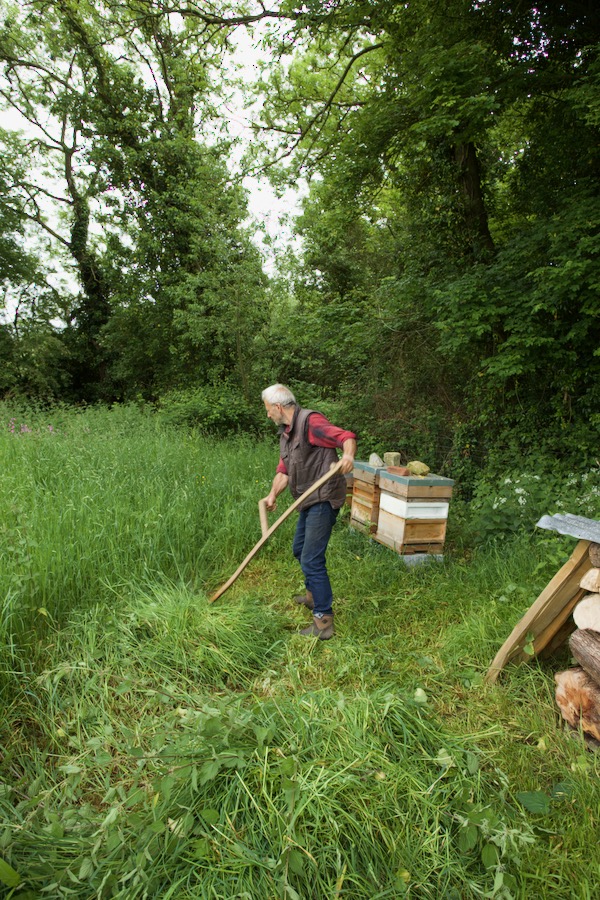
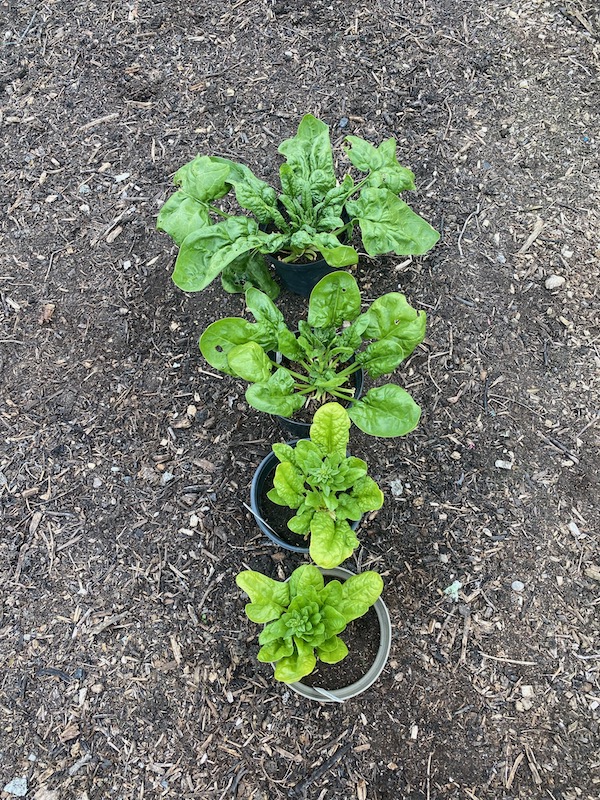
Wood is good, mostly!
Every year I learn so much and this year is a big one, about deep wood mulch: growing plants with a 7cm/3in cover of woodchip, and no compost. The heap is around three years old but it’s hardwood and has quite large pieces, and I suspect it’s mainly old wood, in other words logs that otherwise might have been burnt! The opposite to this would be green wood or one year old wood, from pruning softer growth of the year. Always preferable for gardening!!
The first two photographs show you the dramatic effect of too much wood, which I ascribe to the wood taking nutrients for its own decomposition. Even despite planting potatoes through the wood and on top of soil. But with no compost there.
It’s a thick cover of wood and has been there for a whole year, see it in this 2021 video. Last year we had black polythene over that area and grew almost nothing, except some squash this end where we did add green waste compost!
There is incredible bindweed in this whole area – now we are removing it by hand.
Last week we raked off some of the larger wood pieces from between the potatoes. Then on the left hand side as you look at it in the photograph, we spread around 5 kg dry chicken manure, watch this space! I’m intrigued to see whether the situation is recoverable.
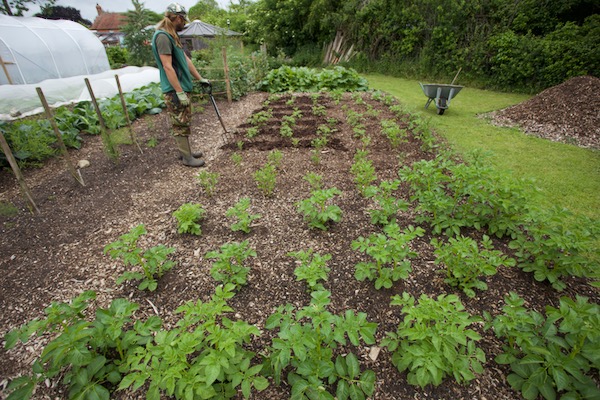

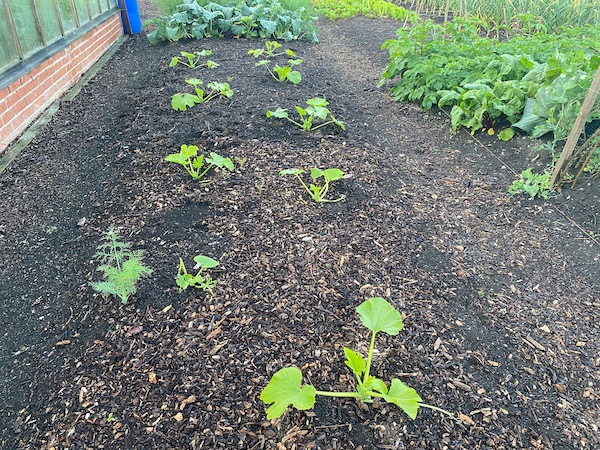
Slugs and aphids are bad, mostly
I mention slugs often to make the point that they are always there, and I suffer some losses. However the damage here is not excessive, and is the chance to see the weak points of my garden (edges if untidy). Slugs are not all bad!
I’m often advised to use beer traps or copper barriers. However these ‘solutions’ tend to prevent the user from working out why they have so many slugs, and how to tackle the origins of the problem> Reasons for high numbers could be plants in the wrong place and/or at there wrong time etc.
I prefer to look at the problem and reduce it, rather than deal with symptoms which often continue.
Likewise with aphids, for which someone said they regularly apply soap and garlic (but the aphids continued). This is like using pesticides and risks weakening or killing potential predators, and therefore the problem persists.
Work instead from the other end and improve growing conditions, the quality of compost, moisture levels , sowing at the best times. There may also be issues (if under cover) of insufficient ventilation and faulty watering.
New Book
In this one title, I merge my two passions in gardening: no dig and growing vegetables. Whether you’re new to no dig or not, it will provide you with the tools and understanding to make this technique your own, and give life to a thriving vegetable garden.
I describe and illustrate soil health and maintenance, how to grow all main vegetables, and there is a detailed directory of edible herbs.
How to make a bed and how to make compost. Why no dig ticks every box. You can preorder from today.
This book is published by Dorling Kindersley and appears in September 2022, in many countries. It’s been my pleasure through the preceding year to work with Jonathan Buckley who took all the beautiful photographs.
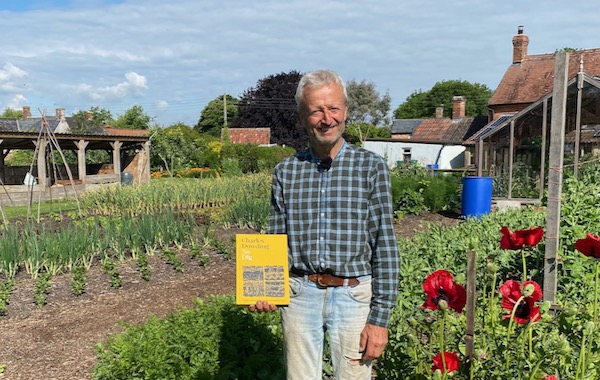
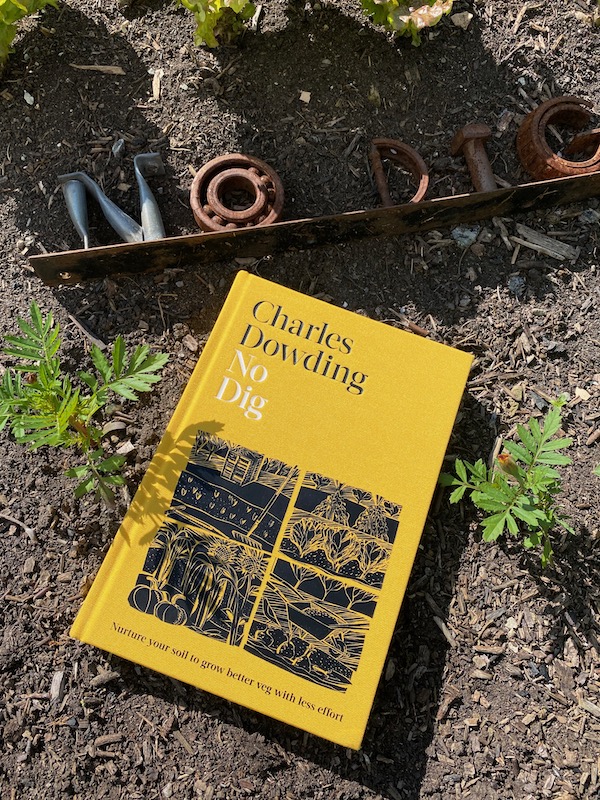
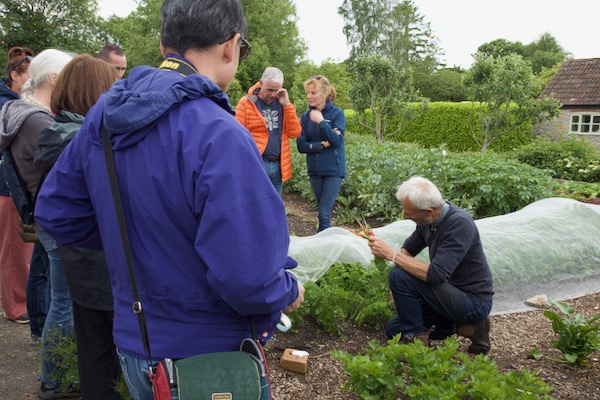
Chelsea RHS Show
I had never resonated with this show, and that is about me as much as about the show! I feel now though that our wavelengths are getting closer because I really enjoyed it this year.
I was lucky to be there on Press Day, and there were not huge crowds! Therefore I had a chance to meet and chat with many interesting people. It was the biggest honour to sit next to Dame Judy Dench! Photos Nicola Smith.
I am just wondering about proposing an idea to the RHS for 2023, watch this space!
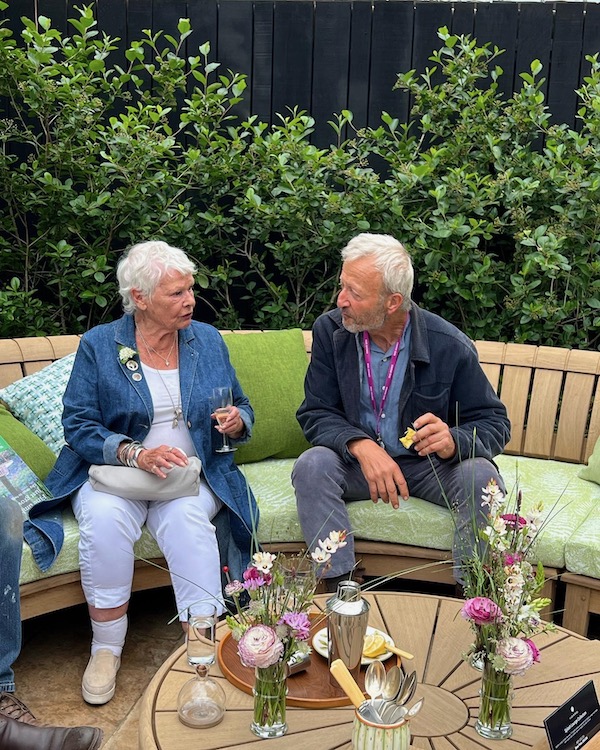
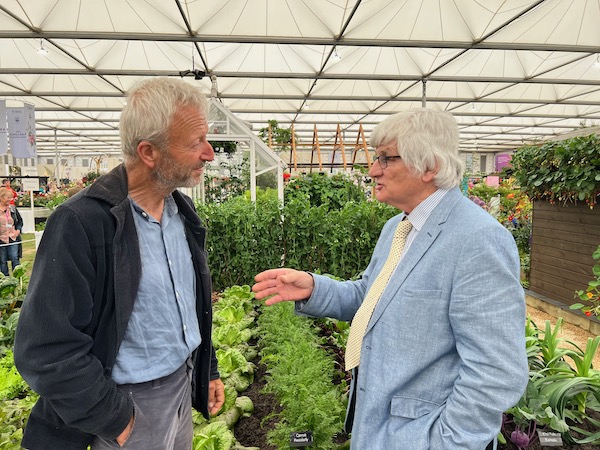

Food for early summer
Spring here has been a little warmer than usual and we have some fantastic early harvests.
I hope that things are going well for you -but I know that Somerset does have favourable weather. Plus we are low altitude, just 20 m/70′ above sea level which helps.
In the last chapter of my Skills book and course (you can buy more cheaply the course module here), I describe ways to warm and energise the soil, which are simple and cheap. There is a big opportunity coming up at dawn on the summer solstice.

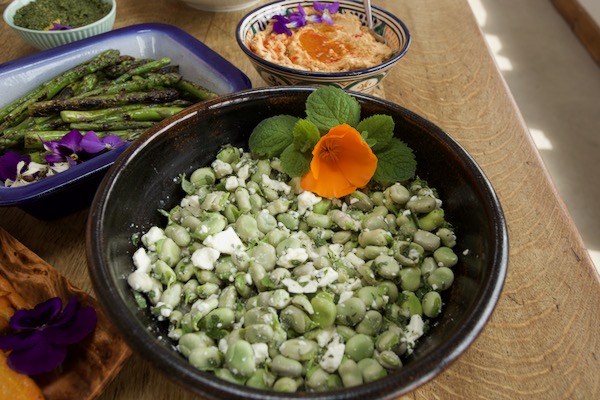
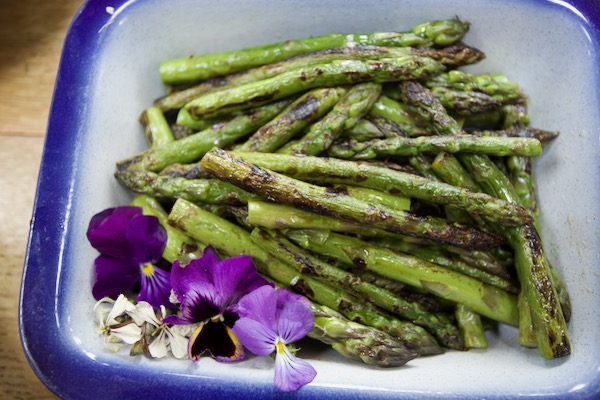









































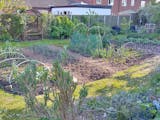
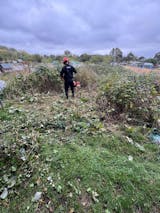
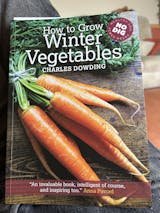
0 comments